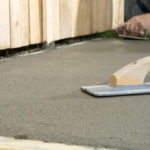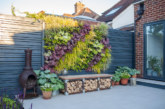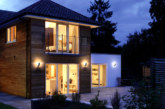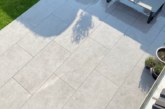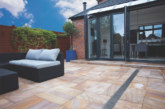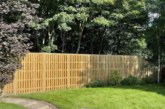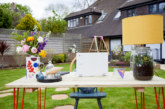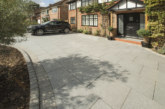Paul Lees, Head of Packed Commercial at Tarmac Cement, looks at the current landscaping trends influencing garden design and how housebuilders can achieve them.
If more people are spending time at home and with outdoor entertaining set to be on the rise, housebuilders must be mindful of the latest trends that could tempt purchasers.
People talk about bringing the outside in, but when deciding on garden furniture and layout, bringing the inside out has been on the rise. This means ensuring a seamless flow from the inside space to the garden and transforming the garden into a stylish entertaining hub for friends and family. In show homes, for instance, housebuilders should explore the different ways to showcase the space by adding concrete worktops, furniture and accessories.
Installing a concrete worktop is an effective way to bring the kitchen outside – adding other warmer, natural textures like fabric or wood can prevent it feeling too austere. Remember, as concrete worktops are generally long and thin beams, it’s critical to use a product with sufficient workability, aggregate grading and strength such as Tarmac Blue Circle High Strength concrete (40N).
Compact
There’s no doubting the popularity of the garden space during each lockdown and purchasers will be mindful of this going forwards – but not every new development has the luxury of space. The key for developers is to make the most of even the smallest garden.
One simple way to add the perception of space is by creating a path in the garden. Some designers advise avoiding a straight path, instead incorporating diagonals into the line to trick the eye into making the space appear larger. In addition, laying a paved border is another solution for a small garden.
Minimalism
The trend for more scaled back design in favour of finishing and attention to detail is set to be big this year – and grey looks like it will continue to be the go-to colour in garden design. For landscaping projects, polished concrete is a versatile and durable solution for garden elements such as planters, pathways and patios. To further enhance the design, adding unique elements such as coloured glass can further complement its simplicity.
The polishing process involves using progressively finer grinding tools until you reach the desired texture. For high traffic areas such as walkways or patios, it’s best to use a high-strength concrete and you should only polish these areas up to three times to maintain a safe slip rating of R10. For decorative planters, you can grind up to nine times to achieve a completely smooth and polished finish.
Office outdoors
Finally, with home working set to continue in some form, garden workspaces will undoubtedly continue their boom. Even before coronavirus, ONS statistics showed the number of home workers rose by 75% between 2008 and 2018. With average UK house sizes decreasing, and office space indoors limited in multi-occupancy homes, the value of a garden office space is all the greater and experts are suggesting that a garden room can add around 5% to the value of a property.
Even if the structure itself is beyond your build budget, a garden office could be an added option to offer potential buyers – and laying a suitable base for purchasers to invest in their own garden office can add perceived value. The process here is no different to laying a patio area. We recommend 200-300mm for a crushed, granular Mot Type 1 material, compacted down with a wacker plate or heavy garden roller. Follow this with a slab base on top of the sub-base and give purchasers to option of a second patio or a ready-made base for their garden office.
Gardens and landscaping have always been a key selling point for many new homes but the significance of the garden space in our lives is only going to increase in the near future. More than ever, taking the time to understand those trends which will appeal to purchasers could be the difference between achieving a sale or not.

